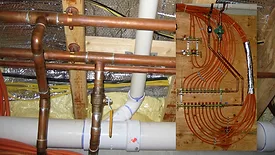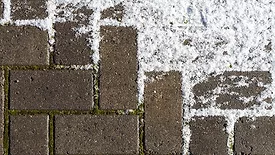Home » Keywords: » radiant heating
Items Tagged with 'radiant heating'
ARTICLES
Can you figure out why this boiler circulator failed?
Read More
Project Profile
Radiant roots: preserving history while powering modern comfort
Elaborate plan delivers efficiency for former Amish barn built in 1838.
November 14, 2025
eBook | 2025 Radiant & Hydronics All Stars
The latest technology, product innovation and installation trends
August 28, 2025
Renewable Heating Design | John Siegenthaler
Aesthetic, efficient and resilient: hydronics outclass multi-splits in key areas
August 20, 2025
No slips, no shutdowns: ensuring access with snow melt systems
How radiant snow melt systems are transforming winter safety around the U.S.
August 12, 2025
Radiant Comfort Report Spring 2025 Edition
Massive snow melt system provides safety for state park
Robust and flexible REHAU RAUPEX piping in one of area’s largest snow and ice melting systems helps State Park Welcome Center guests walk safely all winter long.
July 28, 2025
Radiant Comfort Report Spring 2025 Edition
Best Practices for performance, comfort and longevity
Mastering radiant installation
July 23, 2025
Radiant Comfort Report Spring 2025 Edition
Geothermal and radiant: An energy-efficient powerhouse
Discover how combining geothermal ground source heat pumps with radiant can provide high-performance building design with maximum efficiencies.
July 18, 2025
Radiant Comfort Report Spring 2025 Edition
Thermal energy networks and the future of radiant
A pathway to smarter heating systems.
July 11, 2025
Cleveland Controls ANS2 field adjustable air pressure switch
This product is designed to suit a variety of needs.
June 5, 2025
Keep your content unclogged with our newsletters!
Stay in the know on the latest plumbing & piping industry trends.
JOIN TODAY!Copyright ©2025. All Rights Reserved BNP Media.
Design, CMS, Hosting & Web Development :: ePublishing















